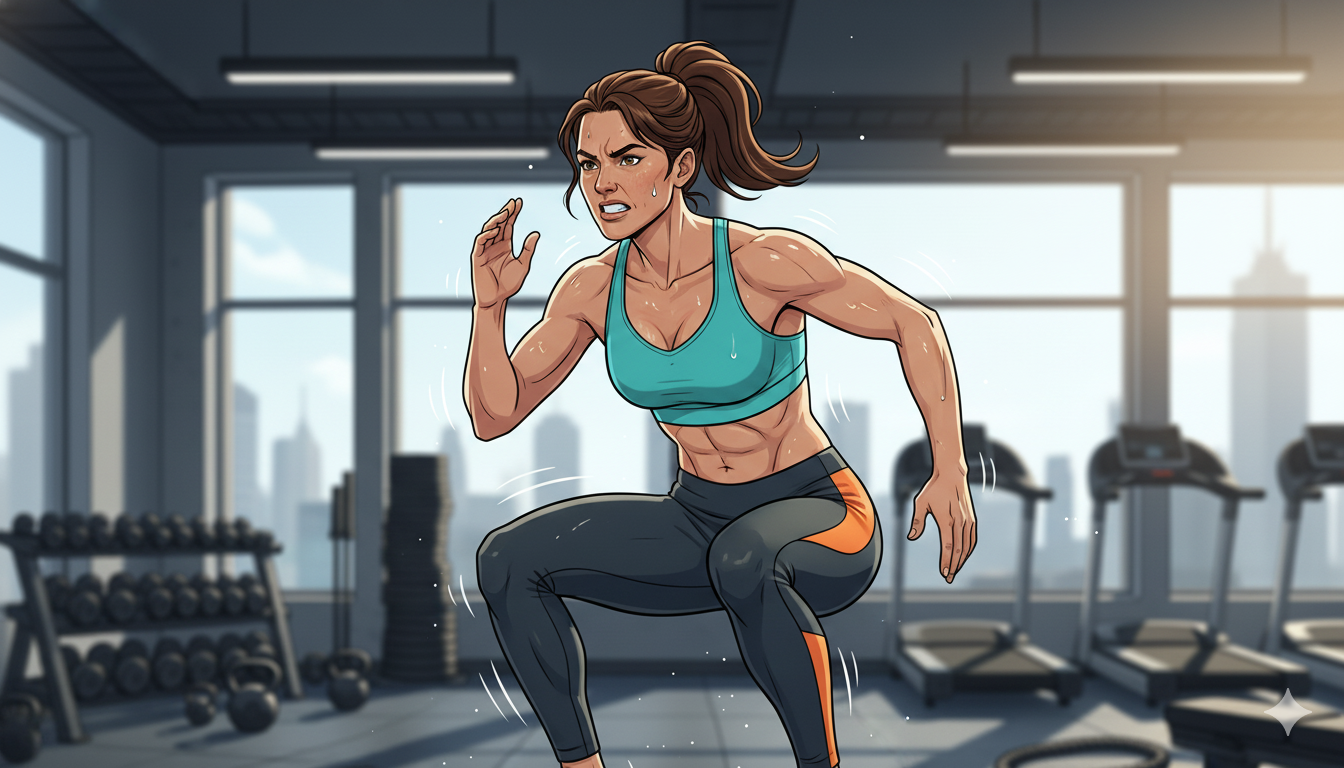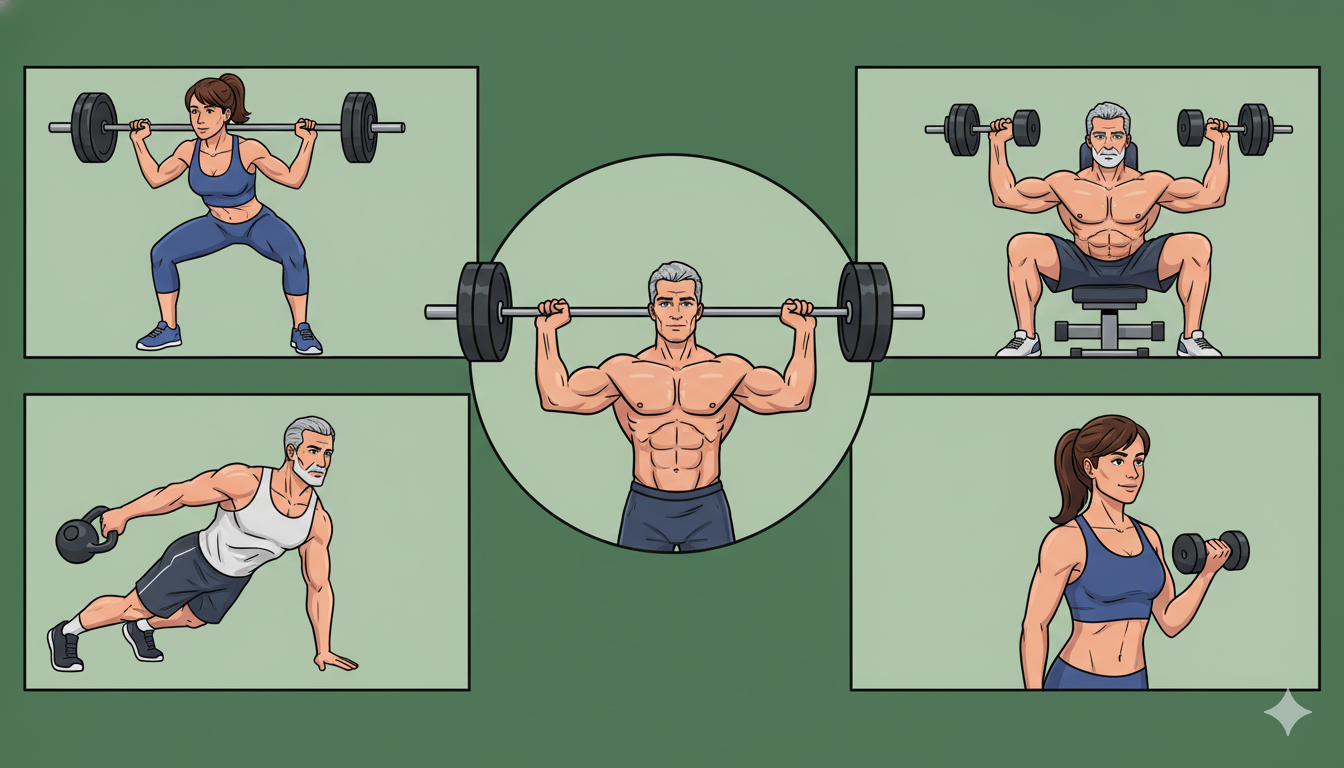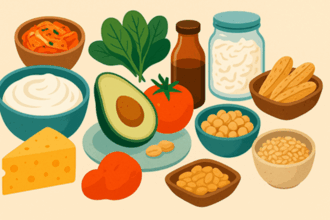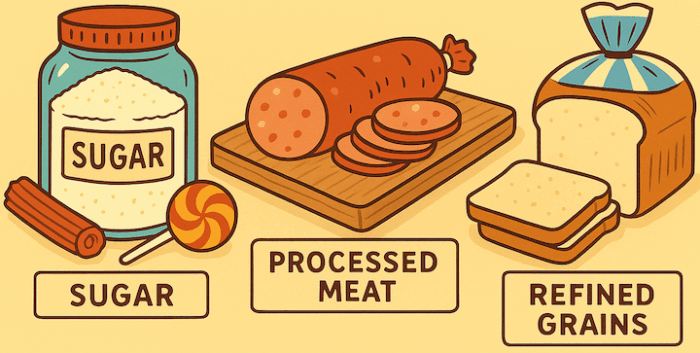[The 40s Redesign, Part 6]: The Metabolic Switch: Your 40s Guide to HIIT (High-Intensity Interval Training)
Welcome back to the 40s Redesign.
In Part 5, we established the Golden Rule of 40s Fitness: You must prioritize strength training. This is how we fight Sarcopenia (muscle loss) and rebuild our metabolic furnace.
This leads to the obvious next question: “So… do I just quit cardio?”
No. But we must be smarter about it. The long, slow, 60-minute jog on the treadmill is not the most efficient use of your time. Remember, our 40s are the peak decade for career and family pressure. We don’t have time to waste on inefficient workouts.
We need a method that delivers the maximum metabolic “bang” for our buck.
Enter HIIT (High-Intensity Interval Training). This isn’t just a trend; it’s a powerful tool, and it’s the perfect partner to your new strength-training foundation.
1. What Is HIIT (And What Is It Not)?
HIIT is a simple, powerful concept:
- Short, all-out bursts of “high-intensity” effort (think 90-100% of your max ability).
- Followed by short, deliberate periods of “low-intensity” recovery (or full rest).
This is the opposite of traditional LISS (Low-Intensity Steady-State) cardio, where you maintain a moderate, conversational pace for a long duration.
- LISS: A 45-minute jog at 65% effort.
- HIIT: A 15-minute session of 30-second all-out sprints, each followed by 60 seconds of walking.
2. The Magic Is in the “Afterburn” (EPOC)
So, why is this so effective?
With LISS (the jog), you burn calories during the run. The moment you stop, the calorie-burning pretty much stops, too.
HIIT is different. By pushing your body to its absolute maximum, even for just a few seconds, you create a massive “oxygen debt.” Your body is so shocked by the intensity that it has to work for hours after you’re done to get back to normal.
This is called EPOC (Excess Post-exercise Oxygen Consumption), or the “Afterburn Effect.”
Your body spends the next 12-24 hours:
- Replenishing its energy stores (glycogen).
- Re-oxygenating your blood.
- Repairing muscle tissue.
- Bringing your elevated heart rate and body temperature back down.
All of this work requires energy (calories). In short: A 15-minute HIIT session can burn more total calories over a 24-hour period than a 60-minute jog.
You’re flipping a “metabolic switch” that stays on long after you’ve left the gym.
3. The 40s-Specific Benefits of HIIT
This “Afterburn” is a game-changer, but HIIT has other specific benefits for our 40s bodies:
- It’s Time-Efficient: You can get a profoundly effective workout in 15-20 minutes. This is the ultimate “no excuses” workout for a busy 40-something.
- It Boosts Good Hormones: Intense exercise is a powerful signal. HIIT has been shown to stimulate the release of HGH (Human Growth Hormone), which is vital for preserving muscle and burning fat—and (as we know) is in steep decline in our 40s.
- It Annihilates Visceral Fat: Remember that dangerous “hidden” belly fat from Part 2? Studies show that HIIT is uniquely effective at targeting and burning visceral fat, even more so than steady-state cardio.
- It Improves Insulin Sensitivity: Just like strength training, HIIT makes your muscles desperate to suck up blood sugar. This is a crucial one-two punch (with strength) to reverse insulin resistance and stop the fat-storage cycle.
4. How to Use HIIT: The Perfect Partner, Not the Star
A critical warning: HIIT is not a replacement for strength training.
Think of it this way:
- Strength Training is what builds your bigger, better metabolic engine.
- HIIT is the high-octane fuel you put in it to burn fat at top speed.
You can’t do HIIT every day. Because it’s so intense, your body (especially your 40s body) needs to recover. Doing it too often will jack up your cortisol (Part 4), leading to burnout and injury.
The 40s Fitness Strategy:
- 2-3 Days/Week: Dedicated Strength Training (Your #1 priority).
- 1-2 Days/Week: Dedicated HIIT (15-20 minutes total).
- Other Days: Active recovery (walking, mobility).
Simple 40s-Friendly HIIT Workout:
- Warm-up (5 min): Light jogging, dynamic stretches.
- HIIT Block (10 min):
- 30 Seconds: Max Effort (Sprints, Assault Bike, Kettlebell Swings, Burpees)
- 60 Seconds: Total Rest or Very Slow Walk
- Repeat 6-7 times
- Cool-down (5 min): Walking, stretching.
Conclusion: Work Smarter, Not Longer
In your 20s, you could “fix” your diet by just “going for a run.” In your 40s, that’s no longer true.
You have to be strategic. By combining the engine-building power of strength training with the fat-burning power of HIIT, you are creating a metabolic machine that works for you, 24/7.
But all this new work—the lifting, the sprinting—puts new demands on our body. If our joints are stiff and our muscles are tight, this new plan will last about two weeks before we get injured.
How do we “bulletproof” our bodies so we can keep doing this for decades?
In Part 7, we’ll cover the single most-neglected element of 40s fitness: Mobility and Flexibility.
What’s your experience with HIIT? Have you tried it? Do you love it, or does it intimidate you? Let’s talk in the comments.
(Blog Post Ends)





